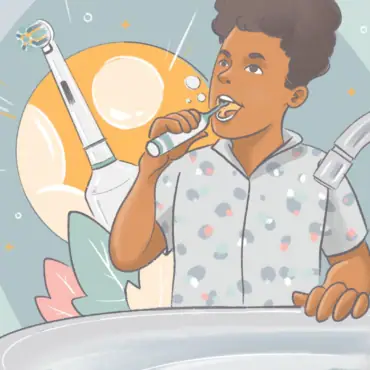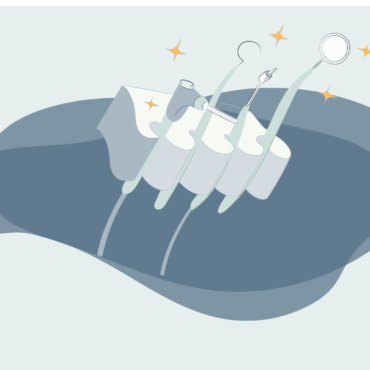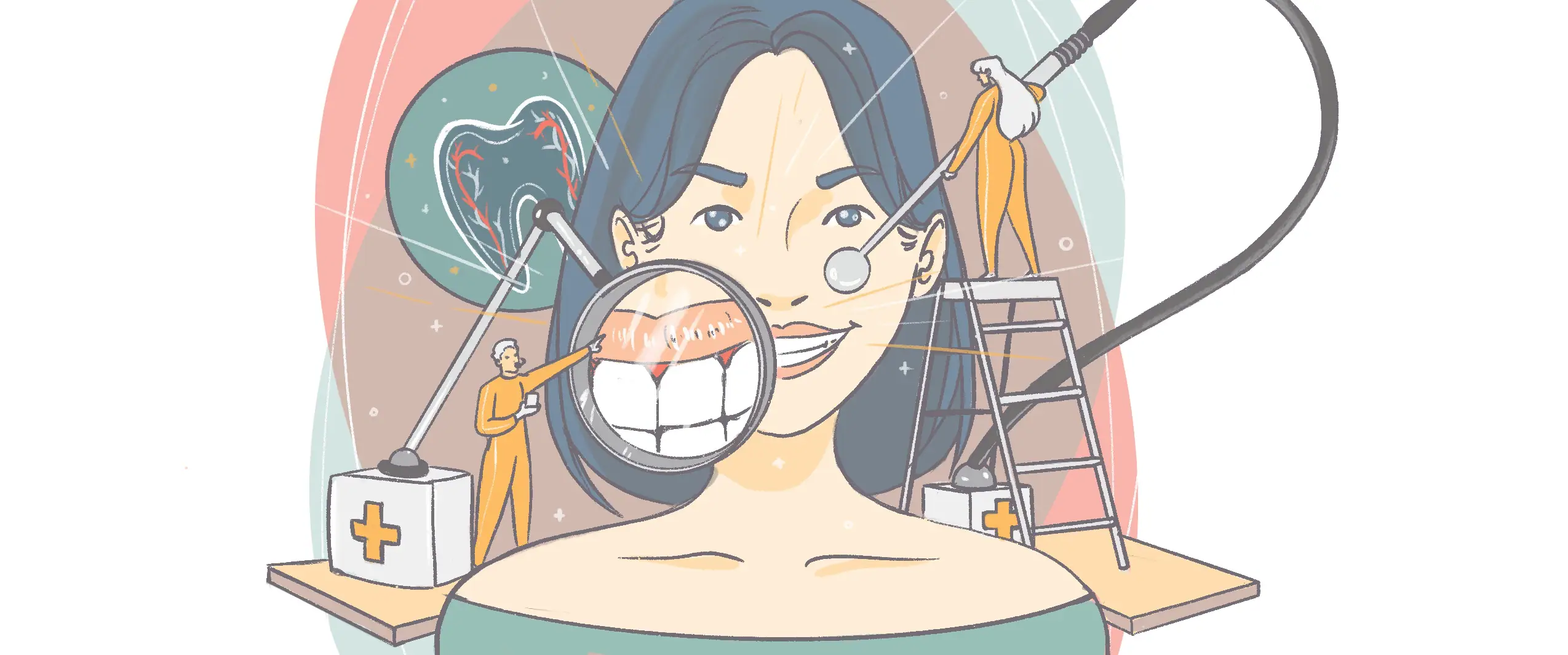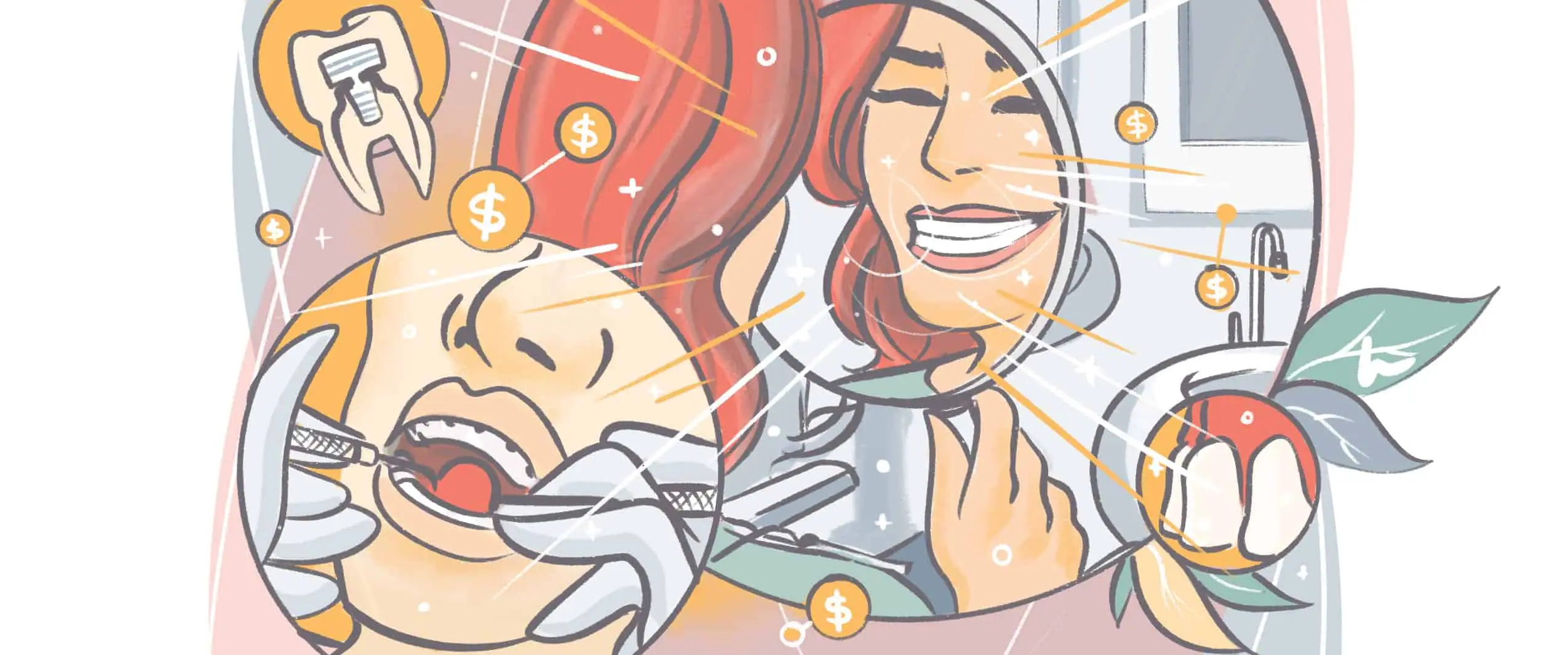The image of a perfect, pearly white smile may feel like something to aspire to — but it’s practically fiction when it comes to real life.
Roughly 70 percent of adults have tartar on their teeth, but the unsightly brown and yellow appearance is only the tip of the proverbial iceberg. Left unchecked, tartar can lead to a variety of ailments like tooth decay, cavities, and gum disease.
It’s important to prevent and remove tartar from teeth once it occurs. Join us as we explore the basics of dental plaque and tartar, the problems it can cause, and different ways to keep tartar at bay.
Dental Plaque and Tartar 101: The Basics
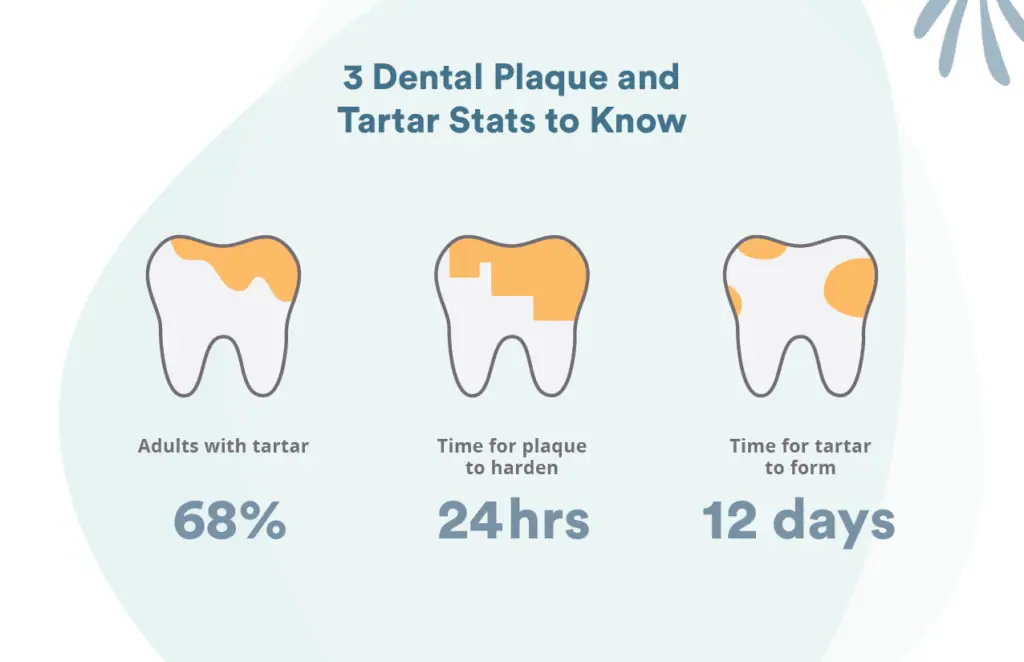
The first step in protecting against tartar on teeth is being aware of the basics, so let’s do just that.
Dental Plaque, Defined
Plaque is quite common. As WebMD explains, even people who take meticulous care of their mouth will still have plaque-causing bacteria in their mouths:
“[These bacteria] mix with proteins and food byproducts to form a sticky film called dental plaque. This gunk coats your teeth, gets under your gum line, and sticks to fillings or other dental work.”
A little plaque at the end of the day is normal. Brush twice a day with an electric toothbrush and floss regularly and most of the food and drink residue that leads to plaque can be eradicated.
“Plaque will never go away completely, but it can be controlled with good oral hygiene and visits to the dentist,” a Washington D.C.-based dentist told Live Science.
It’s when people get away from brushing and flossing regularly that plaque hardens and turns into tartar — and problems arise.
Tartar, Defined
Healthline defines tartar, which is also known as dental calculus, as “an accumulation of plaque and minerals from your saliva that harden.”
Once burrowed between molars and under gums, tartar goes to work eroding enamel and infecting gums. If the resulting gingivitis (a mild form of periodontal gum disease) isn’t treated, it can lead to periodontitis, which MedlinePlus defines as an inflammation and infection of underlying teeth bone structure — and the number one cause of tooth loss in adults.
There are two types of tartar on teeth:
- Supragingival tartar occurs along the gum line and, according to Biodistra, “is often formed on the lingual surface of the mandibular anterior teeth or on the outside of the large teeth in the upper jaw.”
- Subgingival occurs below the gums and between teeth. This is the more serious type of tartar, Biodistra notes.
Tartar is extremely common, with 68 percent of adults having it, according to Crest.
Common Causes for Dental Plaque and Tartar
Ever have a really delicious dessert without brushing your teeth soon after? According to WebMD, eating food that contains sugars and starches and giving it time to mix with bacteria inside one’s mouth is the surest way to develop plaque.
And the average mouth has a lot of bacteria. The University of Illinois at Chicago asserts that 300 different types of bacteria live inside human mouths, constituting roughly a billion microbes.
Plaque, a sticky film, can quickly develop from that unholy smoothie of food and drink particles and bacteria. According to Humana, it takes about 12 days for plaque to turn into tartar.
Due for a checkup?
Find a top rated dentist near you that takes your insurance.
What Dental Plaque and Tartar on Teeth Can Lead To
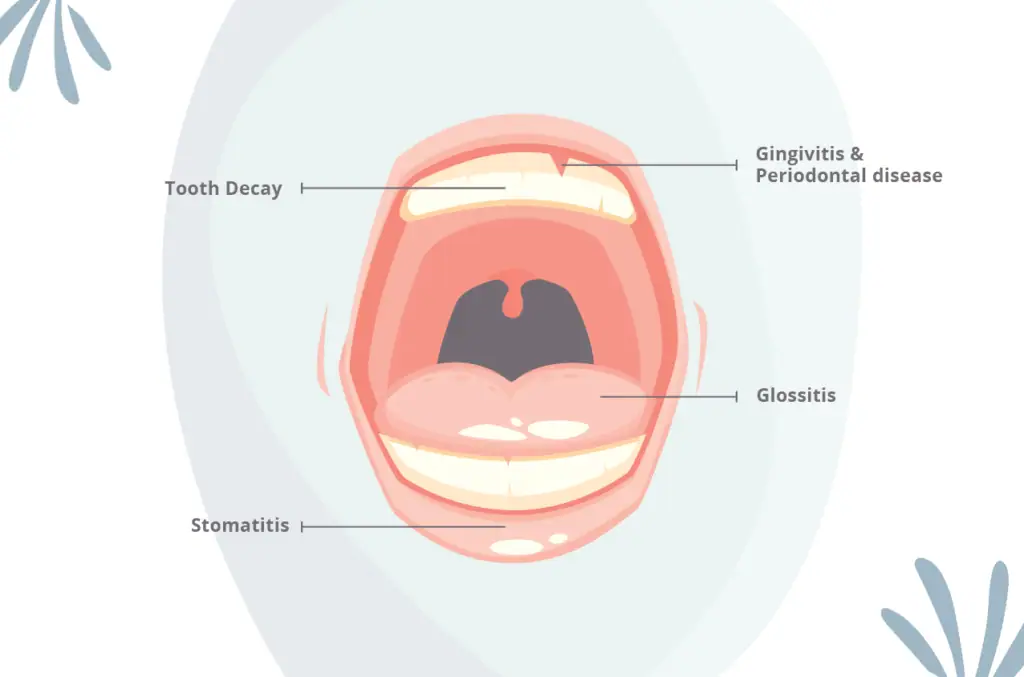
Not surprisingly, there is no shortage of maladies associated with dental plaque and tartar. Here are a few things to watch out for.
Halitosis
First off, prepare for some funky breath. It only makes sense that dental plaque and tartar on teeth can lead to bad breath, or halitosis, as they’re caused by a mix of bacteria and rotting food particles and other residue.
It’s as if one’s mouth has become a petri dish, a forgotten micro-buffet, or mini trash can when oral health isn’t carefully tended to. That stuff stinks.
Halitosis is fairly common, with the American Dental Association suggesting that approximately 50 percent of adults will experience it. Dealing with plaque promptly can help you avoid becoming part of that statistic.
Gingivitis
The Centers for Disease Control noted in a 2016 report that nearly 50 percent of Americans aged 30 or older had signs of gingivitis, or gum disease. Unfortunately, tartar and dental plaque each play a major role in this happening.
Removing tartar from teeth and preventing plaque through regular brushing, flossing, and trips to the dentist can significantly lower the risk of gum disease.
Weakened Tooth Enamel
Enamel is the bodyguard of your teeth. Once this thin outer layer is damaged, it’s difficult if not impossible to recover. For this reason, protecting tooth enamel is an important determinant of good dental health.
One of the easiest ways to destabilize enamel? Letting plaque and tartar fester on the outside of teeth. Left for too long, the damage can be lasting and can compound into a variety of other problems including cavities, periodontitis, and even, studies suggest, serious problems like cardiovascular disease.
Healthy enamel is a first line of defense and one worth maintaining even at high cost.
Tooth Decay
While the term sounds fairly broad, tooth decay typically refers to damage to the surface of one’s teeth. Plaque and tartar on teeth are two of the prime culprits — damaging enamel, tooth coloring, and surface integrity.
Cavities
Left to decay long enough, teeth can suffer cavities, which are small holes in their surfaces.
Cavities are one of the world’s most common medical conditions. In fact, the CDC found that 90 percent of adults have had a cavity and that one in four likely have an untreated one.
Cavities are highly preventable and often don’t just happen unless teeth are left to wallow in dental plaque and tartar.
10 Tips to Control Tartar
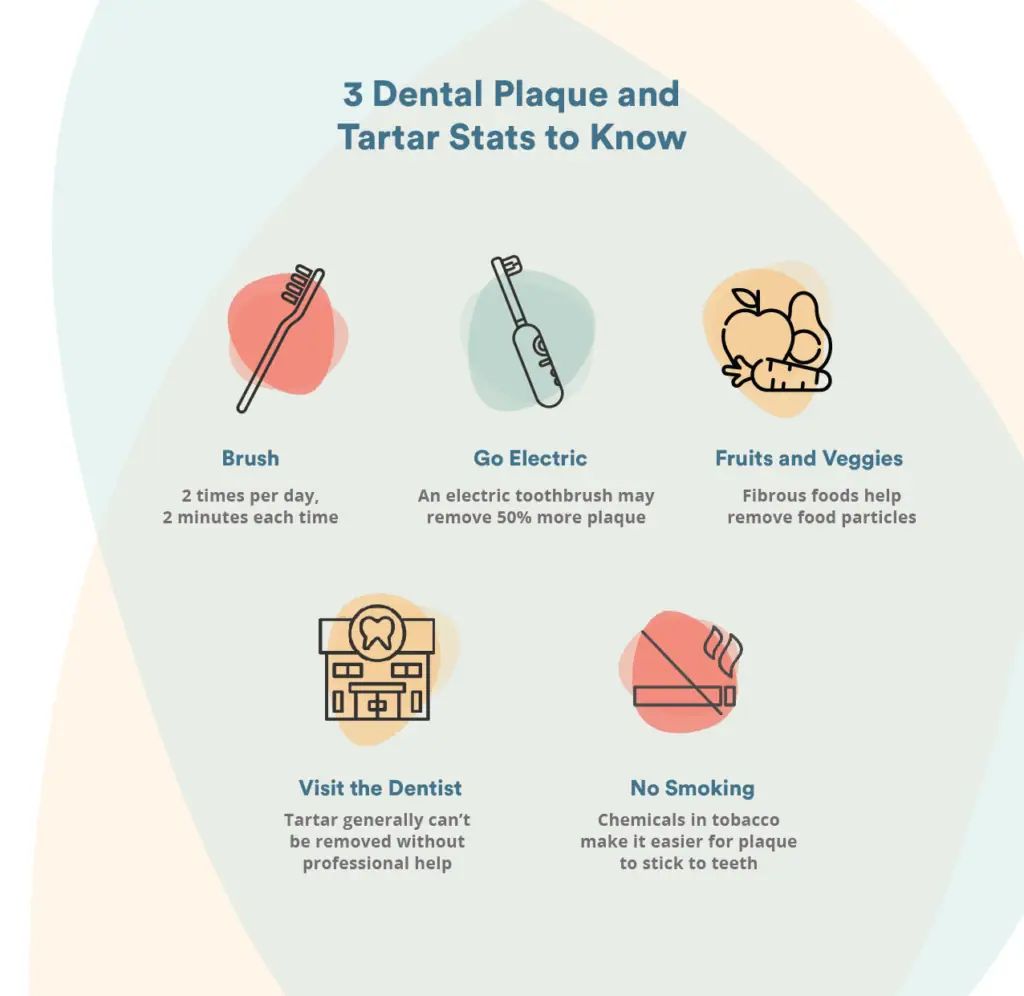
Dental plaque and tartar can cause significant damage to your mouth. The good news, however, is that there are plenty of ways to reduce plaque and guard against tartar ever setting in.
Here are 10 strategies that can yield positive results.
1. Brush: Twice Daily, Two Minutes Per Session
This might not be the first time you’ve heard that the ADA recommends brushing twice a day for at least two minutes each time. Still, it bears repeating. Keep to this regimen to loosen and flush out the food particles and drink residue. When left in your mouth, these “leftovers” mix with the natural bacteria to form plaque and tartar on teeth.
2. Remember to Floss (and Rinse)
Brushing is great for removing the plaque from the surface of one’s teeth. Doing so with an electric toothbrush can even remove some of the plaque between teeth. However, some plaque might remain in the hard-to-reach interior areas. Flossing another way to get at it. Rinse after flossing to help ensure that any freshly-agitated plaque between the teeth is flushed out of the mouth.
3. Ditch Manual Toothbrushes in Favor of Electric Ones
Electric toothbrushes are a vastly superior option to manual brushes. Studies have shown electric brushes removing upwards of 50 percent more plaque.
4. Opt for Tartar-Control Toothpaste That Includes Fluoride
People who don’t brush as often as they should but drink fluoridated water sometimes get lucky and their teeth stay relatively healthy. This is due to fluoride’s tooth-protecting capabilities.
Of course, an even better option than simply drinking fluoridated water is to opt for tartar control toothpaste with fluoride. As WebMD notes, fluoride can help repair enamel damage — and some toothpastes even have triclosan to fight the bacteria in plaque.
5. Eat Responsibly
Sometimes, drinking that third soda, eating that second piece of cake, or devouring that entire bag of chips might not be the best idea.
Limiting carbohydrates, sugars, and starches can be a great way to reduce dental plaque, tartar on teeth, and the chances of deeper problems developing. When you can’t avoid these treats be sure to brush promptly after you enjoy them.
6. No Smoking
As Ameritas noted a few years ago, smoking can affect oral health in a variety of ways, including increasing the likelihood of plaque and tartar.
Smoking helps usher in plaque and tartar because tobacco’s chemicals affect the flow of saliva and make it easier for bacteria to stick to surfaces in the mouth. In fact, smokers are up to six times more likely to develop gingivitis or periodontal disease.
7. Angle Your Brush
Changing up the angle of one’s toothbrush can allow for plaque to be attacked from different directions and can help the brush reach different parts of the mouth.
8. Eat Fruits and Veggies
Fruits like strawberries or apple slices and vegetables like carrots or celery can help stimulate saliva, which keeps food and drink particles and bacteria from sticking to teeth. The fibers in fruits and vegetables can also act as a sort of natural brush.
9. Turn to Tartar Professionals
Once formed, it’s difficult to remove tartar from teeth without proper tools. Professionals such as dentists, dental hygienists, and periodontists have the scrapers, power brushers, and lasers needed for effective tatar removal.
10. Get to the Dentist Regularly
Get to the dentist every three to six months to help keep tartar from staying on the teeth too long and wreaking havoc.
Sick of tartar? Us, too! Use Opencare to quickly find an affordable dentist in your area who can rid your mouth of tartar.
Due for a checkup?
Find a top rated dentist near you that takes your insurance.



